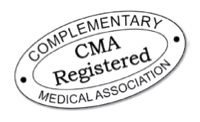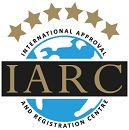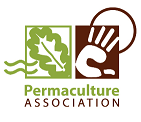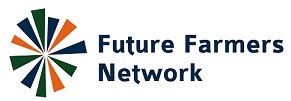How Is Knowledge Of External Anatomy Helpful For Animal Production
Discover what makes animals tick...
Understanding the basics of animal anatomy and physiology will help you lot manage and care for your animals.
Appropriate for beginners and intermediate students akin, this class will assist you larn the baselines for beast health and biological systems. It will help y'all:
- understand how to diagnose affliction
- determine if an brute has sustained an injury
- understand the physical capabilities or limitations of particular species
- sympathise what happens in the nutrition and growth processes
You volition report:
- cells and tissues,
- the skeletal organisation
- the digestive system,
- the circulatory arrangement,
- the urinary system,
- the nervous organization,
- the respiratory system,
- the reproductive system,
- muscles and meat,
- brute growth, and development,
- and the endocrine arrangement.
What is Anatomy? What is Physiology?
The term anatomy refers to the science that deals with the form and structure of animals. Physiology deals with the study of functions of the body or whatever of its parts. A thorough knowledge of the structure of an animal imparts a lot of information almost the various functions it is capable of performing.
This knowledge is essential if you want to work with animals in whatever capacity.
Lesson Structure
There are xi lessons in this course:
- Introduction to cells & tissues
- livestock classes
- livestock products
- interrelationship betwixt crops and livestock
- cells and tissues
- special properties of cells
- osmosis
- nutrient waste
- The Digestive System
- digestive system
- mouth, tongue, teeth,
- oesophagus
- simple breadbasket
- small intestine
- large intestine
- ruminant stomach
- accessory organs of the digestive arrangement
- digestion
- absorption and utilisation in the unproblematic stomach
- enzymes
- breakup by microorganisms
- digestion, assimilation and utilisation in the ruminant tummy
- mechanical action
- activity of micro-organisms
- utilisation of the end products of digestion
- The Circulatory Arrangement
- circulatory organization
- composition of blood
- functions of blood
- clotting mechanism
- amnesty
- claret vessels
- arteries
- veins
- capillaries
- physiology of the circulatory system
- rates of centre beats
- spleen
- lymphatic system
- circulatory networks
- The Urinary System
- anatomy of the urinary system
- kidneys
- ureter
- bladder
- physiology of urinary organization
- excretion in dissimilar animals
- The Nervous System
- cardinal and peripheral nervous arrangement
- main parts of the nervous system
- neurons
- sensory neurons
- motor neurons
- central nervous system
- the brain
- spinal cord
- peripheral nervous system
- cranial nerves
- spinal nerves
- autonomic nervous system
- reflex actions
- endocrine arrangement
- structure and part of the ear
- hearing
- construction and role of the eye
- the iris
- structure and role of the nose
- Respiration
- beefcake of respiration
- trachea
- bronchial tree
- lungs
- physiology of respiration
- gaseous exchange
- rate and depth of breathing
- The Reproductive Arrangement
- anatomy of the male reproductive system
- testes
- accompaniment organs
- penis
- physiology of male reproductive system
- hormone production
- sperm production
- erection
- ejaculation
- fertility problems in males
- venereal diseases
- other diseases
- injury
- physical immaturity
- emotional immaturity
- nutrition
- poor handling
- beefcake of female person reproductive system
- ovaries
- fallopian tubes
- uterus
- neck
- physiology of the female reproductive system
- ovulation, heat cycle
- fertility problems, difficulties conceiving
- crabs and other diseases
- physical abnormalities
- diet
- inability to carry a foetus to full-term
- pregnancy and parturition
- fecundation
- pregnancy
- parturition
- birth process
- difficult births
- structure of the mammary glands
- secretion of milk
- milk ejection
- reproduction data for cows, sows and ewes
- Muscles & Meat
- muscles and meat
- smooth muscle
- striated voluntary muscle
- cardiac musculus
- construction of meat
- dressing out percentage
- composition of the beef animal
- meat quality and tenderness
- juiciness
- flavour
- cuts and joints of meat
- The Skeleton
- bones
- how bones are formed
- anatomy of basic
- fractures and fracture healing
- v types of bone
- joints of bone
- the skeleton
- dentition
- the dental formula
- cattle
- dental formula of an ox and cow
- eruption of permanent teeth
- pigs
- Creature Growth, Development, and the Endocrine System
- growth and development
- growth curve
- prenatal growth
- post-natal growth
- fat
- factors which affect the size of newborns
- factors affecting post-natal growth
- early maturing
- compensatory growth
- endocrine arrangement
- pituitary gland
- thyroid
- parathyroid
- thymus
- adrenal bodies
- pancreas
- testes
- ovaries
- pineal trunk
- mucous membrane of the stomach
- Comparing Different Animals
- poultry
- digestion
- gullet
- crop
- proventriculus
- gizzard
- intestine
- caecum
- rectum
- incubating eggs
- natural incubation
- symptoms of a broody hen
- fish
Each lesson culminates in an assignment which is submitted to the schoolhouse, marked by the school's tutors and returned to you with any relevant suggestions, comments, and if necessary, extra reading.
Aims
- Explain the structure of animals, including bones, organs, cells and tissues.
- Explicate the digestion of animals.
- Explain the circulatory arrangement of animals.
- Explain the structure and function of the creature urinary organisation.
- Explain the nervous organisation of animals.
- Explicate the respiratory organization of animals.
- Explain the beast reproductive organization.
- Explicate the muscular arrangement in animals.
- Explain the skeletal system of a typical mammal.
- Explain biological mechanisms underlying the growth and evolution of animals.
- Explain the endocrine system of animals.
- Explain differences between different types of animals, in terms of both structure and function.
Feedback on this course:
"I call back information technology is absolutely brilliant. I have never come across such a friendly, helpful staff and am and so enjoying my form. I volition definitely recommend A.C.S to anybody who wants to study" Tanya Sadler - United Arab Emirates
"The course teaches y'all the different systems within animals in terms of construction and function, cell and tissue structure, and besides the differences betwixt different categories of animals." Marius Erasmus - A.C.S Tutor - B. Scientific discipline (Agriculture,) B. Scientific discipline (Wild animals), Master of Science (Agronomics)
Learning is Your Showtime Step to Meliorate Beast Management
An understanding of fauna anatomy and physiology is important for people working in a range of industries, particularly those working with livestock, domestic pets and wildlife. This grade focuses mainly on mammal species, however, some other more developed animals are also included; and it provides a very sound introduction to understanding both the structural beefcake and functional physiology of animals.
Before you tin properly empathize how an animal grows, moves, processes food, gets ill, or anything else -you must showtime sympathise what it is (the parts it is made of), and how it functions (the fashion each of those parts operates).
- Structure (anatomy) deals with the different parts of the animal torso, such as; cells, tissues, os, and muscle.
- Function (physiology) covers the different systems that are at work in animal torso, such as; digestive, loco motor, urinary, and reproductive systems.
How Does an Animal Sustain and Grow itself?
Consider how nutrients laissez passer from the arteries into the cells and how the waste matter products pass from the cells into the veins.
Both arteries and veins are spread throughout the trunk. Arteries accept oxygenated blood away from the heart to the diverse parts of the body, and veins render the de-oxygenated blood dorsum to the heart and lung. To brainstorm with, they are big tubes about the width of a little finger. They take thick walls. Equally an artery spreads out, it divides into branches and become progressively smaller and narrower until finally they become very fine, thread-like tubes called capillaries. Capillaries take very thin walls and are the place where arterial arrangement and the venous system connect up with each other.
Betwixt the capillaries and the cells to which the capillaries carry nutrients, there is a fluid called interstitial fluid. (Interstitial means "intervening space"). This fluid surrounds the cells and capillaries and acts as a connecting link.
The nutrients carried past the arteries pass through the walls of the artery to the capillaries and then travel through the interstitial fluid before passing through the walls of the cells. Waste material products pass in a similar way but in the reverse direction! They travel through the cell walls; into the interstitial fluid and through the venous capillary walls.
Although this sounds a simple procedure, it is a complex operation that makes employ of all the special properties of cells (such as osmosis, hydrostatic pressure level and the electro-chemic gradient).
Growth
Growth is described equally an increase in body weight. Development is described as a alter in body proportions. Iv processes are involved in producing the concluding class of an adult beast and these are:
Differentiation or the transformation of mother cells to different prison cell types. For example mother cells alter to class the specialised cells of the brain, kidneys, liver, intestines etc. This process is irreversible - once these specialised organs have been formed the cells cannot change back to mother cells.
Morphogenesis or the organisation of cells into tissues, the building of tissues into organs and the development of organs into the whole body.
Growth is the sum total of the biological and chemical processes that start when the ovum is fertilised and end when the body attains a size and conformation that is characteristic of the species.
Development is the co-ordination of the diverse processes which end in an adult with a form or advent that is feature of the species. Development goes on for longer in college species than in the less sophisticated animals.
Growth Bend
Although growth itself is a highly complex process, it is possible to describe up a graph for each type of creature showing the expected increase in torso weight over time. Such a graph is called a growth curve.
Puberty, which is the onset of sexual practice, occurs at about 30% of body weight i.e. when the animal has washed nigh one third of its growth. In that location are 2 phases of growth. Phase 1 is called the self-accelerating phase because information technology is during this fourth dimension that growth is most rapid. Phase 2 is termed the self-inhibitory phase because the growth slows downward and eventually stops birthday.
The betoken of inflection occurs in Phase 1 and is the time of fastest growth within this already quick growing phase. It highlights the spurt of growth that occurs during puberty. It is an important point every bit it is used to compare the physiological age in different species.
HOW CAN THIS COURSE Help Yous?
This grade starts y'all off with the basics of creature anatomy and physiology which are cardinal to all types of work in the intendance of animals. Doing a course such as this shows you are serious about animals and their care. It is aimed at:
- Those working or wanting to work with animals but who don't have any formal training.
- Those working with animals (e.g. volunteers) to move into a paid career in this field or to improve their career prospects.
- Those that desire to proceeds admission to further study.

ACS is a Fellow member of the Complementary Medicine Clan.

Master of ACS Altitude Education, John Mason, is beau of the CIH.

Member of Study Aureate Coast Education Network.

ACS Global Partner - Affiliated with colleges in seven countries around the world.

Since 1999 ACS has been a recognised member of IARC (International Approval and Registration Centre). A not-profit quality direction organisation servicing education.

ACS is a Member of the Permaculture Association (membership number 14088).

ACS is a Preferred Fellow member Training Provider with the Australian Institute of Horticulture. ACS students meeting AIH criteria tin can bring together AIH as a Category 2 student fellow member.

ACS is an organisational member of the Future Farmers Network.

United kingdom of great britain and northern ireland Register of Learning Providers, UK PRN10000112
How can I outset this course?
Yous can enrol at anytime and start the class when you are fix. Enrolments are accepted all year - students tin commence study at any time. All report is self paced and ACS does not set consignment deadlines.
Please note that if a student is being assisted past someone else (e.grand. an employer or government subsidy), the trunk offering the aid may set deadlines. Students in such situations are advised to check with their sponsor prior to enrolling. The nominal duration of a course is approximately how long a form takes to complete. A course with a nominal duration of 100 hours is expected to have roughly 100 hours of study fourth dimension to complete. However, this volition vary from student to student. Short courses (eg. 100 hrs duration) should exist completed within 12 months of enrolment. Certificates, Advanced Certificates and Awards (eg. over 500 hours duration) would normally be completed within iii -5 years of enrolment. Additional fees may use if a student requires an extended menstruation to complete.
If a student cannot submit their assignments for half dozen months to ACS, they should suggest the schoolhouse to avoid cancellation of their student
registration. Recommencement fees may utilise.
Simply click on the ENROL OPTIONS button at the top of this screen and follow the prompts.
You tin see the class cost at the top of this page. Click 'enrolment options' to see any payment options available.
You tin can pay by Credit Card, PayPal, Afterpay or banking company transfer.
Yeah! We take payment plans for most courses. Click 'enrolment options' to see the available payment plans.
We likewise take Afterpay that will allow you to pay for your course or payment plans in four instalments (if you are in Australia).
What practise I need to know before I enrol?
There are no entry requirements that you need to meet to enrol in our courses, our courses are for everyone.
If y'all are under 18, we demand written permission from your parent/ guardian for your enrolment to continue, we tin adapt that afterward y'all take enrolled.
Y'all don't need to buy any additional resource to complete our courses.
We aim to teach you the essentials without you having to purchase whatsoever specific estimator program.
Nosotros recommend that y'all have access to a word processing programme, such as Microsoft Word or Google Docs, so that y'all can easily complete and submit your assignments.
You sure can. We are here to help you acquire whatever your abilities.
Yes, if you lot are enrolling in a Certificate or Avant-garde Certificate, you lot might be eligible for credits if you take evidence of your previous studies or relevant experience. More than data is here.
We recommend that yous are able to browse websites, send emails and conduct online inquiry. You volition need to exist able to type and submit your assignments.
If yous have limited computer skills, we can make special arrangements for you.
Our courses are written in English and nosotros just have English speaking bookish staff. If you can read and complete your assignments in English, our courses are ideal for you.
Our courses are designed to build knowledge, easily on skills and industry connections to help set you to work in the area, running your own business, professional person development or as a base for further study.
This form has been designed to encompass the fundamentals of the topic. It will take effectually 100 hours to complete, which includes your course reading, assignment piece of work, inquiry, practical tasks, watching videos and anything else that is contained in the course. Our short courses are a great way to do some professional person development or to learn a new skill.
Information technology'south upwardly to you. The study hours listed in the class are a rough guide, however if y'all were to study a short grade (100 hours) at 10 hours per week, y'all could cease the class in ten weeks (just an instance). Our courses are cocky-paced, and so y'all tin can work through the courses in your own fourth dimension. Nosotros recommend that you wait for your tutor to marker and render your assignment before your start your side by side one, and then you become the benefits of their feedback.
The course consists of form notes, videos, ready tasks for your practical piece of work, online quizzes, an assignment for each lesson (that you receive feedback from your tutor from) and ends in an test (which is optional, if would like to receive the formal award at the end), using our custom built Learning Management System - Login.Training.
Our courses are designed for adults to gain professional person development and skills to further their careers and get-go businesses.
Our custom online learning portal allows you to acquit your learning online. At that place may exist practical tasks that y'all can exercise offline. You lot accept the option of downloading your form notes or impress them to read later.
There is also the pick to pay an additional fee for printed class notes and or USB (availability limited to location and deliverability).
Aye, if you don't accept admission to the net, you can receive the course every bit paper notes or on a USB stick for an additional fee. We tin also make alternative arrangements for you to send your assignments to us.
We offer printed notes for an additional fee. Also, you tin request your course notes on a USB stick for an additional fee.
Yep, your tutor is here to assistance yous. Merely post any questions y'all have in your login.grooming portal or contact the office and we tin can pass on a message to your tutor.
We are more than learning focussed, rather than cess focussed. You have online quizzes to test your learning, written assignments and tin complete an exam at the end of the form (if you desire to receive your certificate). You will not receive a pass/ fail on your course piece of work. If you need to add more details on your consignment, we will ask y'all to resubmit and direct you where you need to focus. If you need help, you tin can inquire your tutor for advice in the student room.
Each module (short course) is completed with i test.
Exams are optional, however y'all must sit an exam if you would similar to receive a formal laurels. You will need to detect someone who can supervise that you are sitting the exams under exams weather. There is an additional cost of $55 (AUS) $50 (O/S) for each exam.
More data is here
At that place are applied components congenital into the course that have been designed to be achieved by anyone, anywhere. If you are unable to complete a job for any reason, y'all tin can ask your tutor for an culling.
When you complete the course work and the examination and yous will be able receive your course certificate- a Statement of Attainment. Otherwise, you can receive a Alphabetic character of Completion.
Yes, our courses are built to exist applicable for people living anywhere in any situation. We provide the fundamentals, and each student can utilise their ain unique flair for their own interests, region and circumstances with the ane-on-i guidance of a tutor. There is also a fleck of educatee directed research involved.
Employers value candidates with manufacture skills, knowledge, practical skills and formal learning. Our courses arm you with all of these things to assist prepare you for a job or showtime your own business. The longer you lot study the more you volition learn.
ACS has an arrangement with OAMPS (formerly AMP) who can arrange Professional Indemnity from Australian and New Zealand graduates across all disciplines. Ph: 1800 222 012 or email acs@oamps.com.au.
Who are ACS Altitude Teaching?
ACS Distance Pedagogy have been educating people for over 40 years.
We are established and safe- we have been in education for over 40 years.
We are focused on developing innovative courses that are relevant to you now and what y'all will need to know in the futurity.
We are focused on helping you lot learn and make the almost of your experience.
You can enrol at whatever time, you can work on your course when it suits yous and at your own step.
We are connected to many manufacture bodies and our staff participate in continuous improvement and learning activities to ensure that we are ahead of what learning is needed for the future.
Our courses are non accredited past the Australian Authorities. However many of our courses are recognised and held in loftier regard by many manufacture bodies.
Our courses are written past our staff, who all have many years feel and have qualifications in their speciality area. We accept lots of bookish staff who write and update our courses regularly.
How practice I enrol my staff/ sponsored students?
We tin prepare an invoice, quote or proforma invoice. But complete your details on our Invoice Request form
We can arrange majority discounts for your course enrolment, please arrive touch with u.s.a. to discuss your needs.
Yes, we have many students who are in locked facilities, such as prisons or hospitals. Nosotros can cater by also offering paper notes at an additional cost.
What if I have any more questions or need more data?
We can assist you to find the correct form for your needs. Make it bear on with united states of america via email (admin@acs.edu.au) phone call on +61 7 5562 1088 or complete our grade communication form.
What if I change my mind?
Please make it affect with studentservices@acs.edu.au if you lot would like to exist removed from our mail listing.
If yous would like ACS Distance Education to delete your information at whatsoever fourth dimension (whether you are a client or a prospective customer), please contact our privacy officer and we will procedure this ( admin@acs.edu.au ).
Course Contributors
The following academics were involved in the development and/or updating of this course.

Alison Pearce (Agri & Beast)
Alison brings a wealth of knowledge and experience to ACS students.
She has worked as a University Lecturer, has also run a veterinary operating theatre; responsible for animal anaesthesia, instrument preparation, and assist with surgical techniqu

Dr. Gareth Pearce
Veterinary scientist and surgeon with expertise in agriculture and ecology scientific discipline, with over 25 years of feel in teaching and enquiry in agronomics, veterinary medicine, wildlife environmental and conservation in the Uk, Australia and New Zealand

Marius Erasmus
Subsequent to completing a BSc (Agric) degree in animal science, Marius completed an honours degree in wild animals management, and a masters caste in production animate being physiology. Following the Masters degree, he has worked for 9 years in the United kingdom of great britain and northern ireland, and South
Tutors
See some of the tutors that guide the students through this class.

Gareth Pearce
B.Sc.(Hons), B.5.Sc., M.A., M.Vet.S,. PhD, Grad. Cert. Ed.(HE), Mail-Grad.Cert. Aq.Vet.Sc., Mail service-Grad. Cert. WLBio&Cons., Dipl. ECPHM, MRCVS.
Gareth has over 25 years of experience in education and inquiry in agronomics, veterinary medicine, wildlife ecology and conservation in a variety of colleges and universities in the UK, Australia and New Zealand. He qualified as a veterinary surgeon at the Universities of Melbourne and Bristol, having previously graduated in Agricultural Science and gained a PhD in Livestock Behaviour and Production. He too has post-graduate qualifications in Education, Wildlife Conservation Medicine, Aquatic Veterinary Studies and Wildlife Biological science & Conservation.

Rosemary Davies
B Ed, BSc Hort, Dip Advertising & Marketing
Originally from Melbourne, Rosemary trained in Horticultural Technology at Burnley, a campus of Melbourne University. Initially she worked with Agriculture Victoria equally an extension officer, taught horticulture students, worked on radio with ABC radio (clocking up over 24 years equally a presenter of garden talkback programs, initially the merely adult female presenter on gardening in Victoria) and she simultaneously developed a career as a writer.
She so studied Education and Training, teaching TAFE apprentices and developing curriculum for TAFE, before taking up an offer as a total time columnist with the Herald and Weekly Times and its magazine department after a number of years as columnist with the Historic period. She has worked for a number of companies in writing and publications, PR customs educational activity and management and has led several tours to Europe.

Alison Pearce
Alison brings a wealth of knowledge and feel to ACS Agronomics, Wildlife and Ecotourism students.
She has worked every bit a University Lecturer, a Quality Balls Managing director, a Research Technician, and has also run a veterinarian operating theatre; responsible for beast amazement, instrument grooming, and assistance with surgical techniques and procedures. She has worked in the UK, Commonwealth of australia and New Zealand.
She has all-encompassing feel of handling, husbandry, and management of a wide range of both small and big animals and has a particular dear for nature and wildlife
Source: https://www.acs.edu.au/courses/animal-anatomy-and-physiology-animal-husbandry-i-164.aspx
Posted by: raylichannoosee.blogspot.com

0 Response to "How Is Knowledge Of External Anatomy Helpful For Animal Production"
Post a Comment